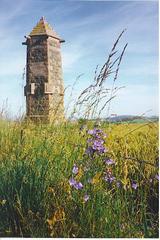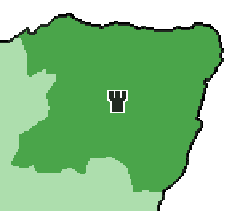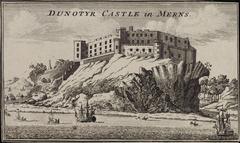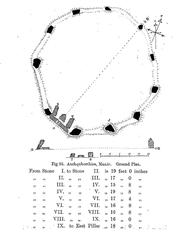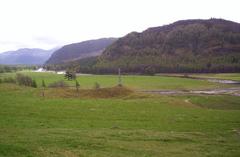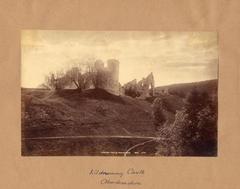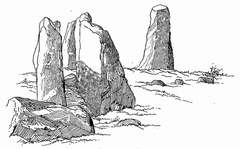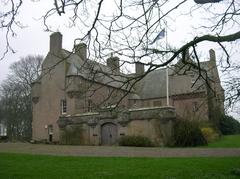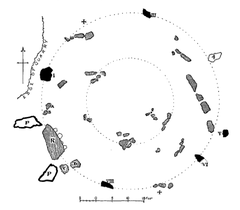Strichen Stone Circle: Visiting Hours, Tickets, and Historical Significance Guide
Date: 15/06/2025
Introduction: History and Cultural Importance
Nestled amid the picturesque landscapes of Aberdeenshire, Scotland, the Strichen Stone Circle is a striking example of prehistoric engineering and ritual activity. Dating to the late Neolithic or early Bronze Age (c. 2500–2000 BCE), this recumbent stone circle is part of a tradition found mainly in northeast Scotland and parts of southwest Ireland. Defined by a massive horizontal “recumbent” stone flanked by tall uprights, the circle’s graded orthostats and deliberate orientation suggest ceremonial and astronomical purposes, likely linked to lunar and solar events (Atlas Obscura; Cambridge Scholars; VisitAberdeenshire).
Over the centuries, Strichen Stone Circle has witnessed significant change: from ritual use, through periods of neglect and outright destruction, to careful archaeological restoration in the late 20th century. Today, it stands as a monument to Scotland’s ancient past and a focal point for both scholarly research and cultural tourism (Britain Express; London Review of Books). Visitors can explore this open-air site year-round, immersing themselves in both its prehistoric mysteries and the scenic Aberdeenshire countryside (Historic Environment Scotland; VisitAberdeenshire).
Table of Contents
- Introduction
- Origins and Construction
- Archaeological Discoveries and Features
- Historical Accounts and Restoration
- Ritual and Astronomical Significance
- Visiting Information
- Frequently Asked Questions (FAQ)
- Conclusion and Call to Action
- References and Further Reading
Origins and Construction
Strichen Stone Circle is a textbook example of a recumbent stone circle, unique to Aberdeenshire and select regions of Ireland. Constructed between 2500 and 2000 BCE, it features:
- A massive recumbent stone (about 2.6m long, 1.05m high) on the southern arc.
- Two tall flanker stones on either side of the recumbent.
- Ten additional upright stones arranged in a graded sequence, decreasing in height away from the recumbent.
- A low bank of earth and rubble, originally covered with quartz fragments for added visual impact (Undiscovered Scotland; Wikipedia; London Review of Books).
Archaeological Discoveries and Features
Excavations have revealed:
- Cremated remains of a woman, hinting at funerary or ceremonial use.
- A central ring cairn with a stone cist, and a possible earlier timber circle, indicating a long period of ritual significance.
- Ritual artifacts such as hammer stones, rubbing stones, and a cup-and-ring marked stone—typical of prehistoric ceremonial art.
Archaeological layers suggest continued importance into the Iron Age, making Strichen a site of enduring significance (Britain Express; London Review of Books).
Historical Accounts and Restoration
Strichen Stone Circle’s documented history dates to at least the 18th century, with Samuel Johnson and James Boswell describing it as a “Druids’ temple” in 1773. The circle suffered major disruption in the 19th century, being dismantled, reconstructed incorrectly, and even landscaped for picturesque effect (Atlas Obscura). In the 20th century, the stones were removed during forestry work and dumped nearby, but were rescued and restored to their original sockets in the early 1980s, guided by archaeologist Aubrey Burl and his team (London Review of Books; Wikipedia).
This careful restoration makes Strichen one of Scotland’s most authentic recumbent stone circles (Britain Express).
Ritual and Astronomical Significance
The orientation of the recumbent stone (always in the southern or southwestern arc) suggests deliberate alignment with major lunar or solar events, possibly functioning as a ceremonial calendar. Theories supported by Aubrey Burl and others propose that the circle’s architecture was designed to frame astronomical phenomena, reinforcing its role as a sacred gathering place (Cambridge Scholars; London Review of Books).
Repeated use, cremated remains, and ritual deposits all indicate a site of deep spiritual and communal importance, possibly connected to ancestor veneration and seasonal ceremonies (Britain Express; Atlas Obscura).
Visiting Information
Location and Directions
- Location: Near the village of Strichen, Aberdeenshire; GPS: 57.507°N, -2.471°W.
- By Car: From Aberdeen, take the A90, then A981 to Strichen. Limited parking available.
- By Public Transport: Bus services connect Aberdeen and Strichen; the walk from the village is about 20–30 minutes.
Hours and Admission
- Opening Hours: Open year-round, 24 hours a day.
- Admission: Free; no tickets required.
Accessibility
- The site is outdoors with an uneven, sometimes muddy approach.
- Not fully wheelchair accessible; visitors with mobility challenges should plan accordingly.
- No restrooms or visitor center on site.
Guided Tours and Events
- Occasional guided tours and educational events occur in summer; check local heritage group or VisitAberdeenshire listings.
Nearby Attractions
- Loudon Wood Stone Circle and Aikey Brae Stone Circle: More recumbent stone circles in the area.
- Strichen Community Park: Woodland walks, picnic areas, and wildlife.
- Mormond Hill: Noted for panoramic views and historic hill figures.
- Fraserburgh Beach: Sandy coastline a short drive to the north.
- Pennan and Royal Deeside: Picturesque villages and castles for day trips.
Travel Tips
- Wear sturdy footwear and bring weather-appropriate clothing.
- Respect the stones and site by not climbing or disturbing them.
- Supervise children and keep dogs on a lead.
- Bring food and water as there are no facilities on site.
- Check the Met Office for local forecasts.
Frequently Asked Questions (FAQ)
Q: Is there an entry fee or ticket required?
A: No, the site is free to visit.
Q: What are the opening hours?
A: Open year-round, 24/7; visit during daylight for safety.
Q: Are guided tours available?
A: Offered occasionally in summer; see VisitAberdeenshire for updates.
Q: Is the site accessible for wheelchairs?
A: The path is uneven and not fully accessible.
Q: Are dogs allowed?
A: Yes, but keep them on a lead.
Q: Are there facilities on site?
A: No; the nearest amenities are in Strichen village.
Conclusion and Call to Action
Strichen Stone Circle stands as a resilient witness to Scotland’s prehistoric landscape, offering visitors a powerful connection to ancient ritual and community. Its turbulent past—ranging from ritual site to near-destruction and finally careful restoration—underscores the importance of heritage preservation. Today, visitors can enjoy this monument free of charge, with the added benefit of nearby attractions and scenic walks in Aberdeenshire.
For enhanced experiences, consider downloading the Audiala app for audio guides and further resources. Plan your visit for spring or autumn for the best conditions, and always respect conservation guidelines to help safeguard this remarkable site for future generations.
References and Further Reading
- Strichen Stone Circle on Atlas Obscura
- Ailish Sinclair: Strichen Stone Circle in Aberdeenshire
- Historic Environment Scotland: Strichen Stone Circle
- VisitAberdeenshire
- London Review of Books: Use Your Theodolite
Images and interactive maps are available through local tourism websites. For planning your trip, refer to the resources above and consider related articles on Aberdeenshire’s stone circles and heritage walks.
